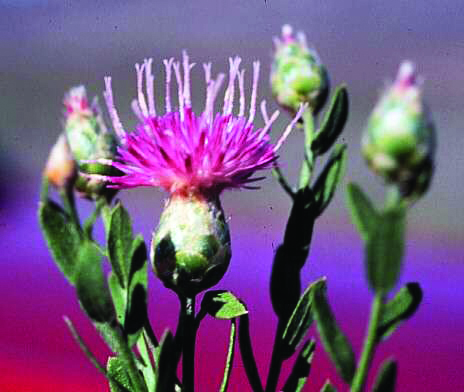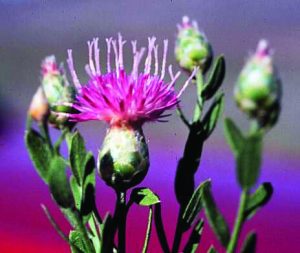
By Blaine Bug Crew

Hey there! It’s the Blaine Bug Crew again, coming at you with another noxious weed! This weed is called Russian knapweed and it is all over deserts, mountains and many more dry and arid places. As noxious weeds go, it is a rather new invader to Blaine County.
Russian knapweed is a perennial plant that reproduces mainly by creeping roots. In addition, a single plant is capable of producing more than 1,200 seeds. These seeds vary in color from gray to ivory and are produced from August through September.
The erect stems are openly branched and typically 45 to 90 cm tall. The leaves are oblong on the upper part of the plant and become deeply lobed the closer they are to the root crown.
Russian knapweed produces many flowers, which range in color from pink to blue. Flowering typically begins in June and continues through September.
Russian knapweed forms dense infestations across habitat types in the arid West. It is a significant pest of rangelands, roadsides and waste areas, and can invade grain and other crops.
There are two new biological control agents. The bugs that kill Russian knapweed are Jaapiella ivannikovi, which is a gall midge, and Aulacidea acroptilonica, a gall wasp. These bugs will help us get rid of Russian knapweed.
If you know of a Russian knapweed outbreak, don’t hesitate to report it to the Blaine County Weed Department at (208) 788-5574. Thank you—and may you have a weed-free day!
